Inside the Oslo library preserving fashion’s printed matter
The International Library of Fashion Research in Oslo will house over 5,000 pieces of printed fashion ephemera that would otherwise have been discarded

It’s rumoured that the ghost of the old station master can be felt gliding through Stasjonsmesterboligen – the cream-coloured, three-floor building located at the entrance to the scenic Aker Brygge area of Oslo. Dating back to the 1920s, it was once part of the former westbound railway station, yet today the site is host to another kind of ethereal presence.
Now home to the International Library of Fashion Research (ILFR) – the brainchild of firebrand publisher Elise By Olsen – the Station Master’s House, as the building’s name translates, holds more than 5,000 pieces of contemporary printed matter that were once destined to be discarded. This notion of the ‘station between’ shaped Olsen’s ambition to open a place where the ephemerality of the material donated by late cultural theorist Steven Mark Klein can help steer critical fashion discourse. The doors open on 29 November 2022.
Inside the International Library of Fashion Research
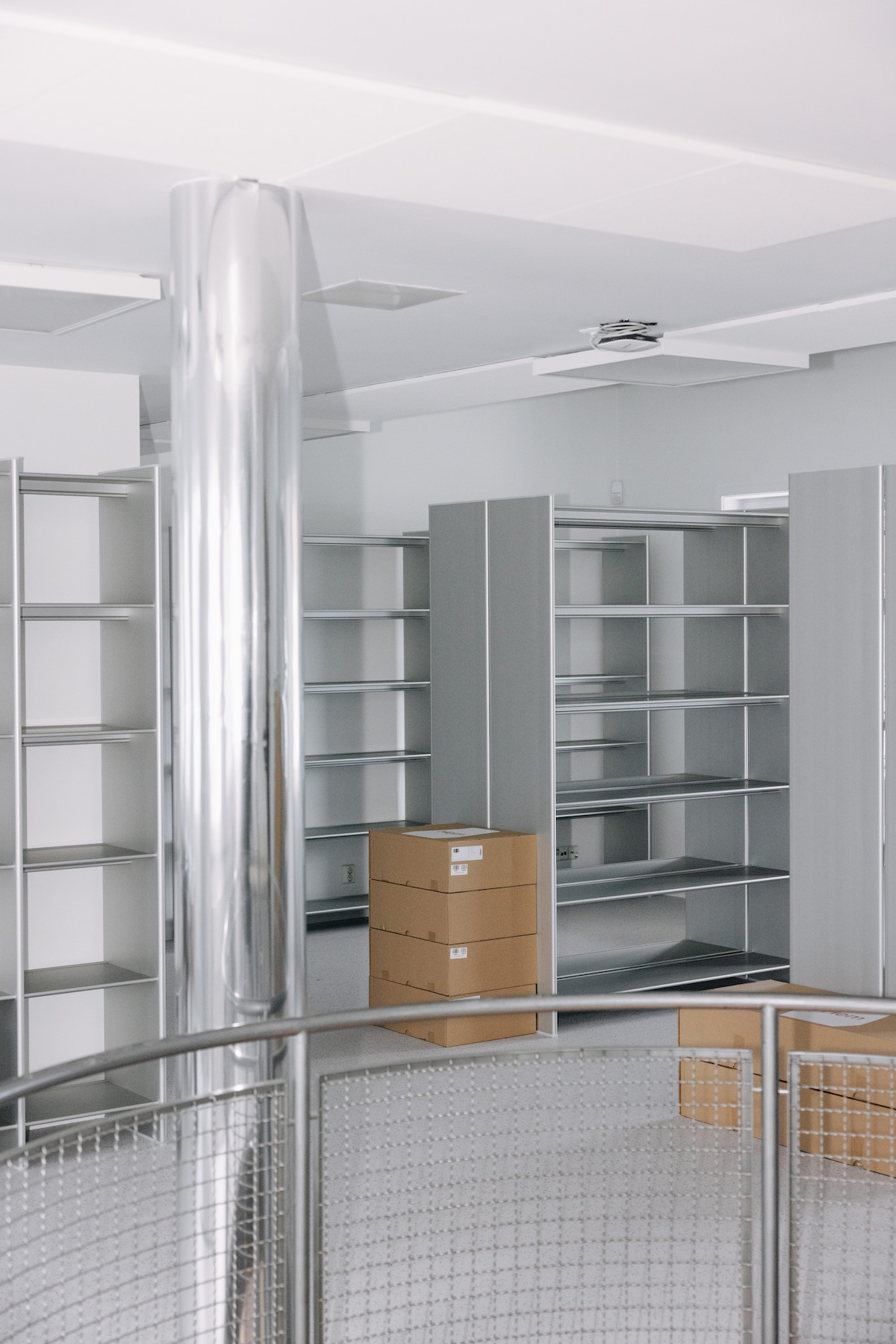
International Library of Fashion Research, Oslo
What does a fashion space devoid of commercial function look like? Ahead of the library’s opening, without anything on its shelves and with piles of magazines and lookbooks swaddled in bubble wrap on the floor, Olsen joins Wallpaper* on Zoom while folding archival box after archival box. ‘The space is minimal, but it has this punch. It’s a carte blanche space for study,’ she says.
Behind her, ranks of Formafantasma’s low-carbon, aluminium ‘T Shelf’ for Hem, wait expectantly. Olsen sits at the library’s single large study table, set by a bright window overlooking the cobbled courtyard of the Oslo National Museum. Its denim tabletop is manufactured by Kvadrat Really using end-of-life textiles and wool. Three black Luxo lamps that Olsen nabbed from the museum during its recent refurbishment are placed down the middle.
In late 2020, Olsen and the ILFR’s head of communications Else Skålvoll Thorenfeldt both read Fashion Spaces: A Theoretical View written by the Oslo-based Latvia-born architect and researcher Vésma Kontere McQuillan. Published by Frame, the book defines fashion spaces as an emerging area within architectural writing. McQuillan – who is the head of the research group TYP-0.Lab at nearby Kristiania University College – has run a project called ‘Brandscapes’ for a decade. She immediately took the ILFR on as a research challenge for her students.
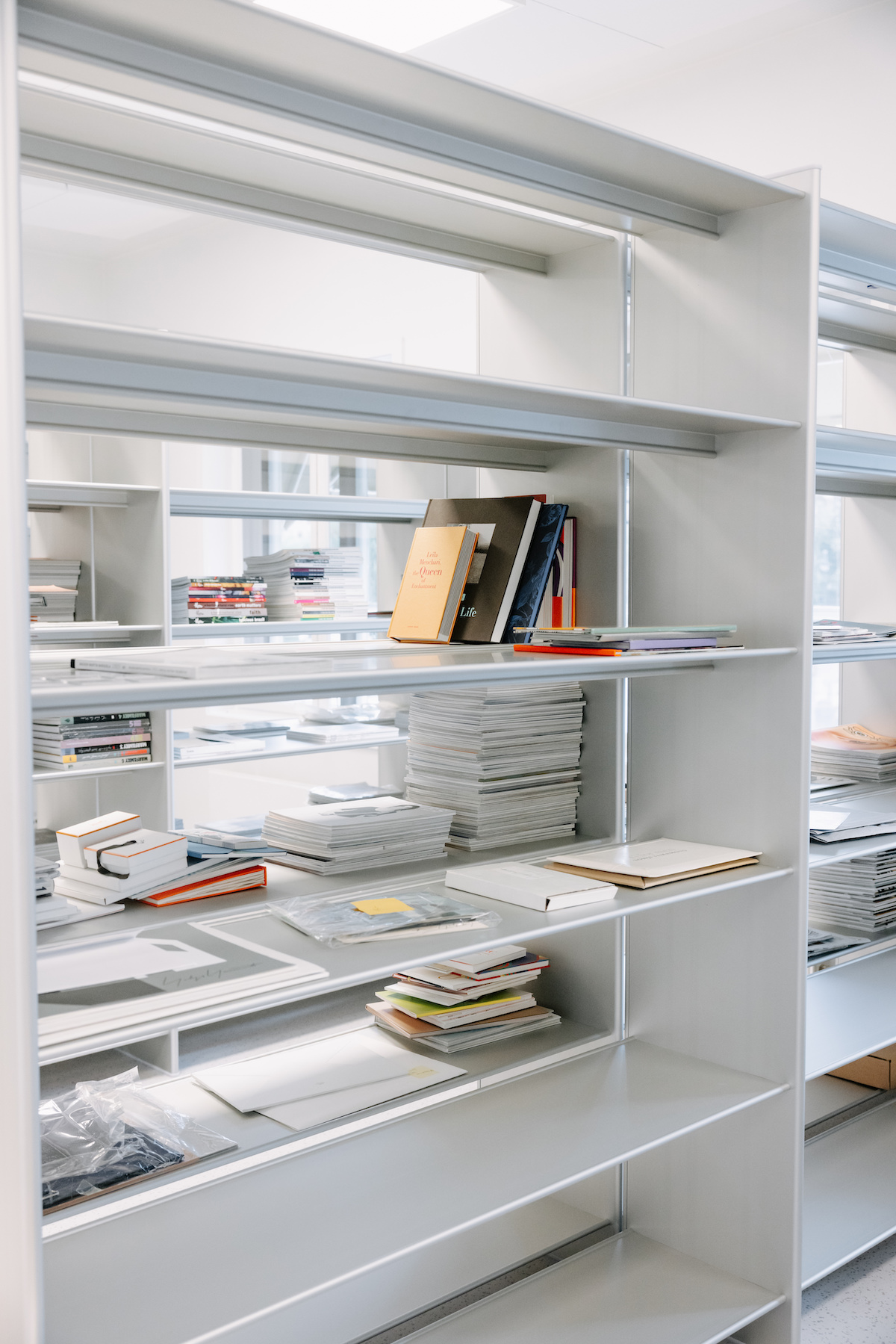
International Library of Fashion Research, Oslo
Stasjonsmesterboligen is red listed, meaning that nothing can be fixed directly to its walls and floors. The first floor is also home to a bustling museum shop, and a central circular tunnel runs through the centre of all three floors, causing some acoustic challenges. It is – Olsen, Thornfeldt and McQuillan all agree – ‘not an easy space’.
In early 2021, 12 students began researching the geographic and conceptual context of the library; what does the space need to be? ‘We knew that this was going to be a library and hold its own collection, but we weren’t sure how the space would operate at first,’ McQuillan says. Olsen and Thorenfeldt wanted to house the growing collection but leave room for a range of diverse curatorial activities. ‘The site is very small, so we started first by thinking about the place – Oslo – and its connotations. When we decided to look at the ILFR as a museum rather than a library, the typology totally changed. We are talking about a space that is dedicated to curatorial activities. Mentally, when we began treating it as part of the museum, everything came together.’
Receive our daily digest of inspiration, escapism and design stories from around the world direct to your inbox.
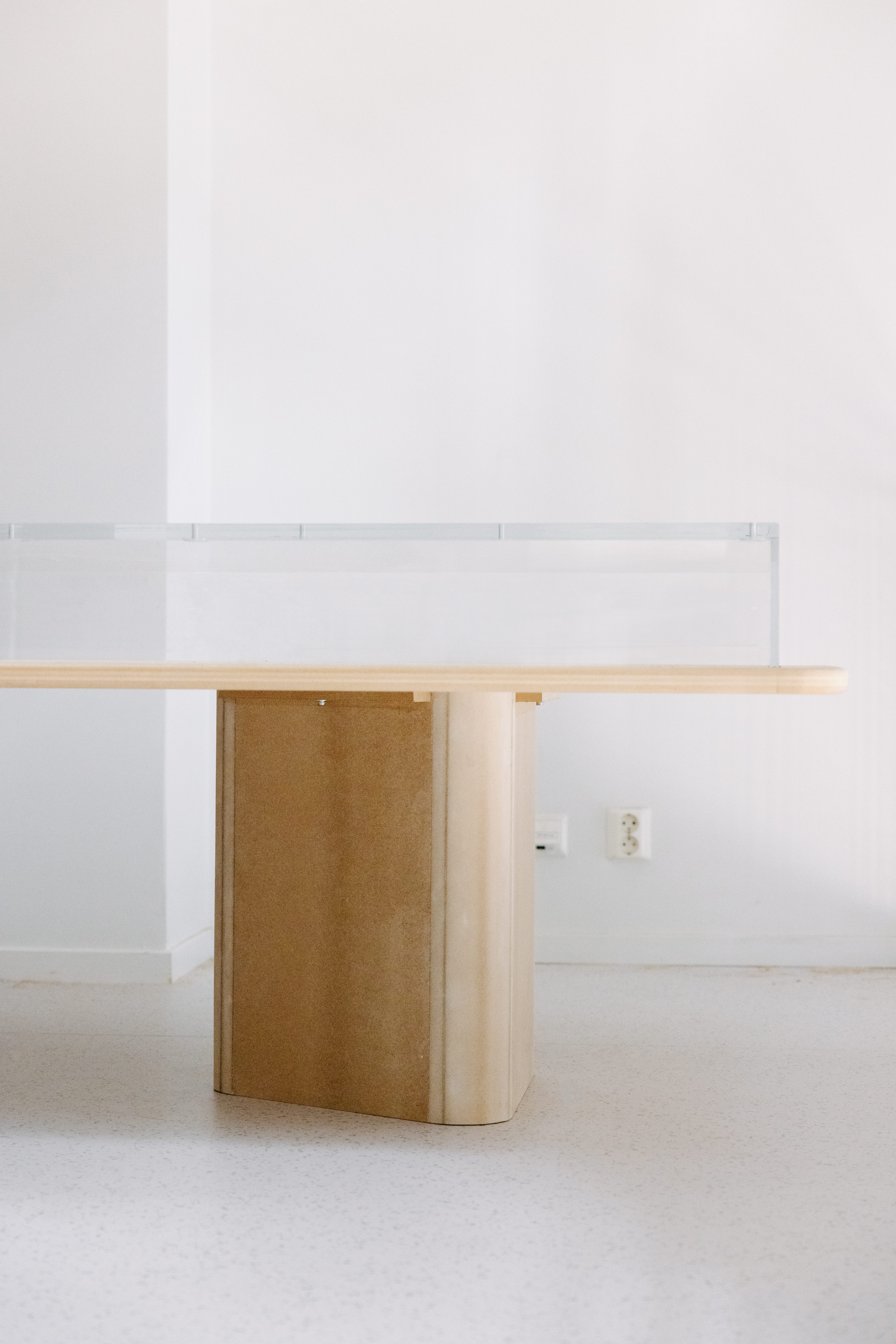
International Library of Fashion Research, Oslo
The space feels futuristic: a cusp-of-the-millennium Hype Williams music-video set streamed through a splayed MacBook Air. Its materials channel varying levels of sheen, from highly reflective metallic covers on columns to the matte aluminium bookshelves. The library is a shell that reflects its contents. ‘When you get a lot of the objects into the space, it becomes full of their colour, their storytelling. I’m happy to hear that it looks futuristic because that’s the point of a library, no? It provides knowledge for the future,’ McQuillan says.
A point of departure for the project was six vitrines inherited from the National Museum. Dating from the late 1980s, their squat wooden plinths and clumsy Perspex tops have been reworked to incubate a number of different curatorial activations. Ahead of the opening, McQuillan’s second cohort of students are testing out the possibilities for exhibition making; how can they use the vitrines? How do they affix projectors into the space? Before it has even officially opened, the ILFR has become an on-site laboratory, a research discothèque.
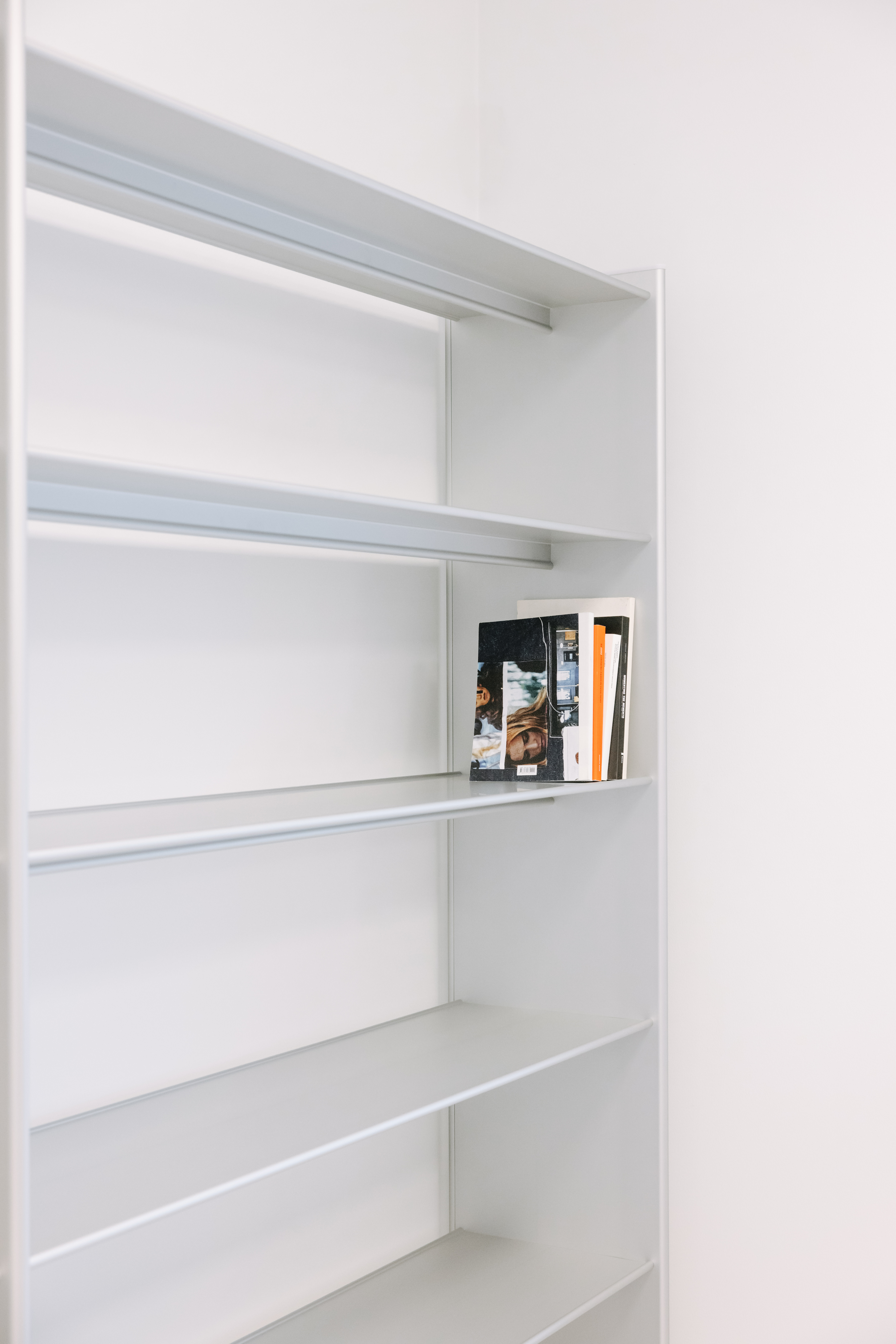
International Library of Fashion Research, Oslo
Nothing from the collection is going to be on permanent display, meaning that the people visiting the library – and what they are there to study – will alter its connotations. Another haul from the National Museum resulted in the arrival of three black trolleys, which Olsen is excited to put to use. ‘Nikolaas Verstraeten, who is a member of our advisory board, came over to see us. We were talking about how you get this track record, an algorithm, that might suggest something else when you are researching digitally. We wondered how we could translate that into this physical space,’ she says.
The trolleys will be filled up with everything that has been requested and will stay untouched for a week so visitors can see what else is being referenced. Olsen says: ‘The library is trying to preserve a bunch of different expressions. Right now I am the only one here, but how will it work when people actually start sitting around the table? This project will keep evolving and growing. It’s never going to be complete.’
London based writer Dal Chodha is editor-in-chief of Archivist Addendum — a publishing project that explores the gap between fashion editorial and academe. He writes for various international titles and journals on fashion, art and culture and is a contributing editor at Wallpaper*. Chodha has been working in academic institutions for more than a decade and is Stage 1 Leader of the BA Fashion Communication and Promotion course at Central Saint Martins. In 2020 he published his first book SHOW NOTES, an original hybrid of journalism, poetry and provocation.
-
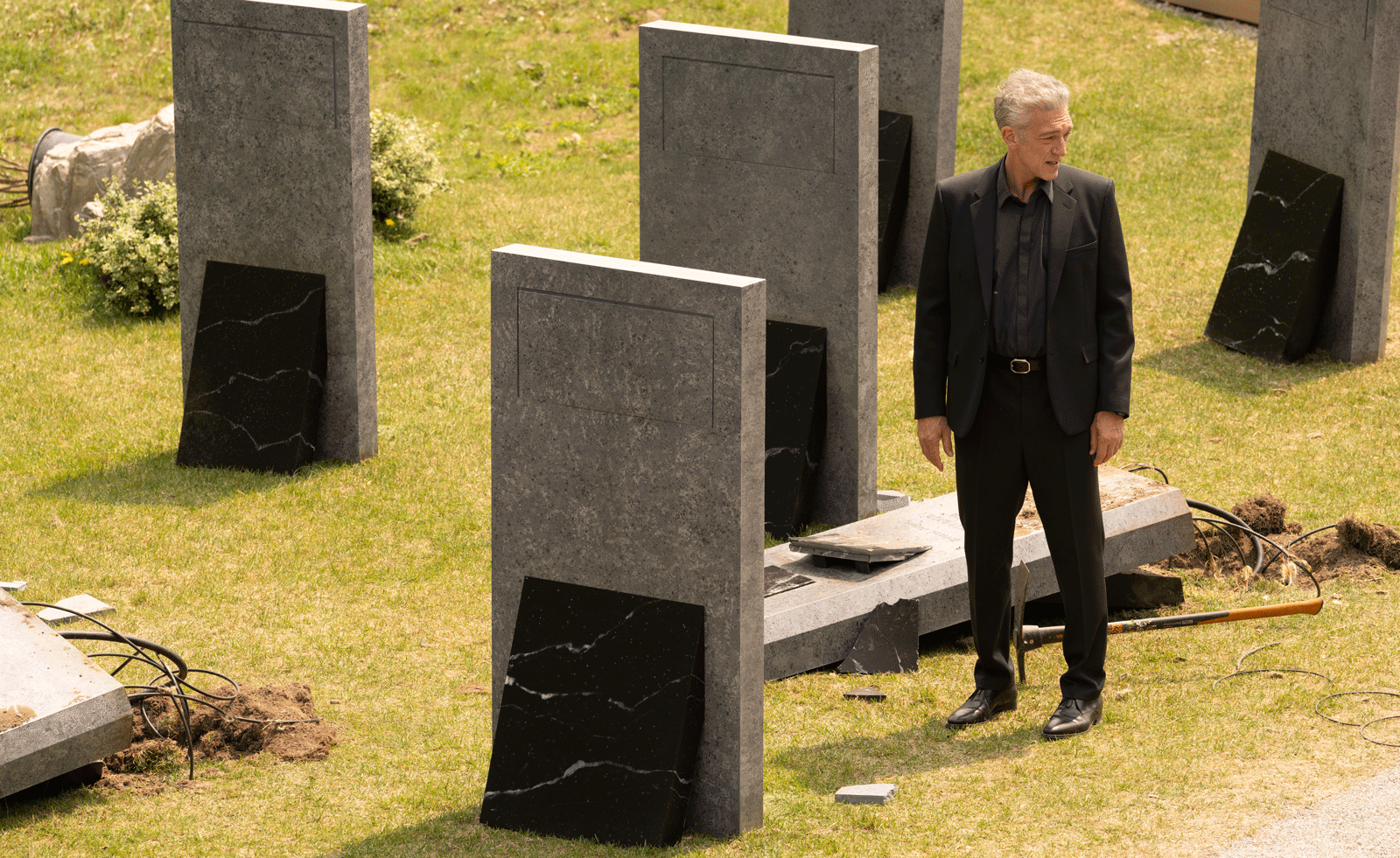 David Cronenberg’s ‘The Shrouds’ is the film for our post-truth digital age
David Cronenberg’s ‘The Shrouds’ is the film for our post-truth digital ageThe film director draws on his own experience of grief for this techno conspiracy thriller
-
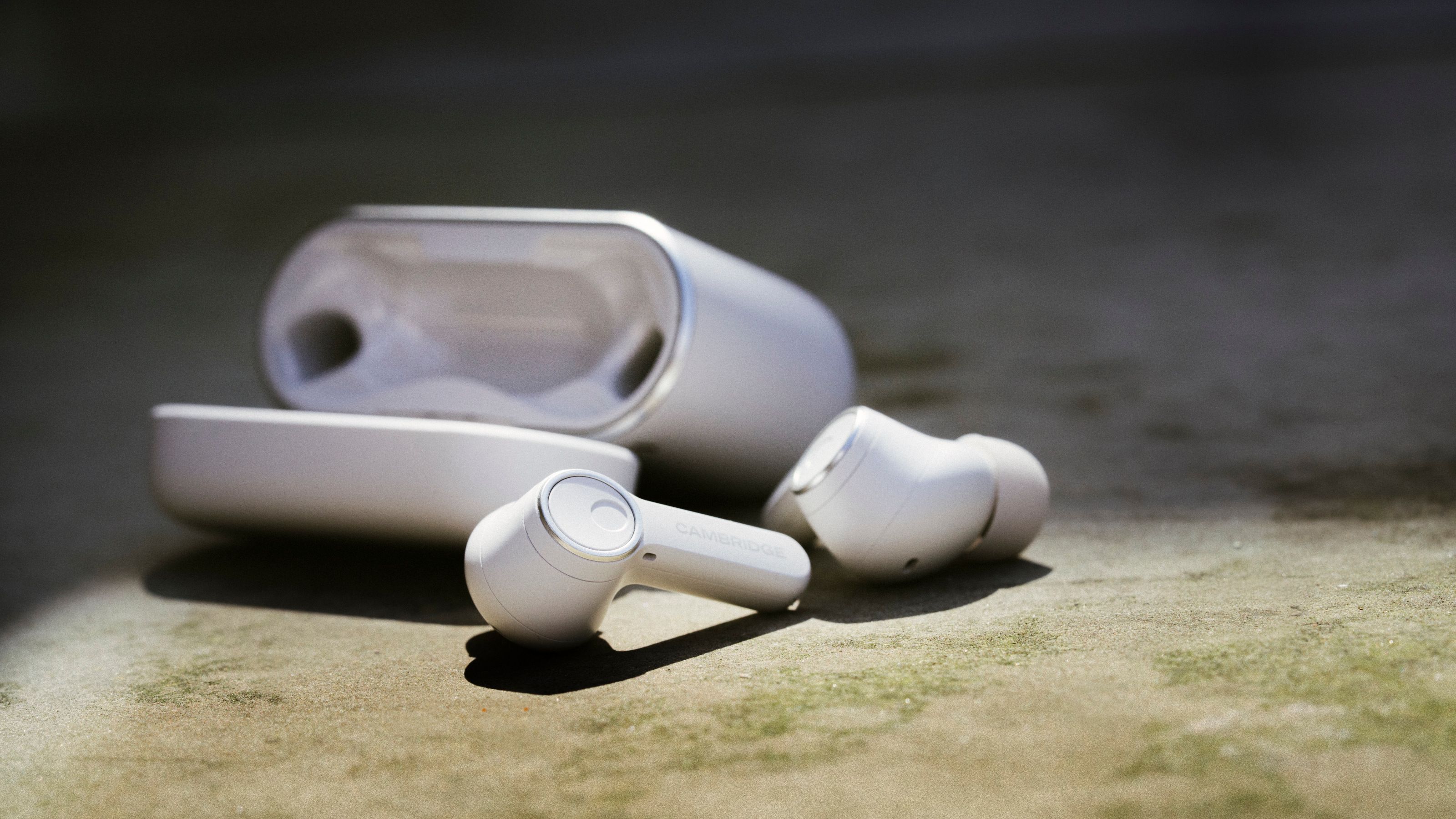 Cambridge Audio's new earbuds offer premium performance without denting your pocket
Cambridge Audio's new earbuds offer premium performance without denting your pocketThe Cambridge Audio Melomania A100 earbuds demonstrate just how far affordable audio tech has come in the last decade
-
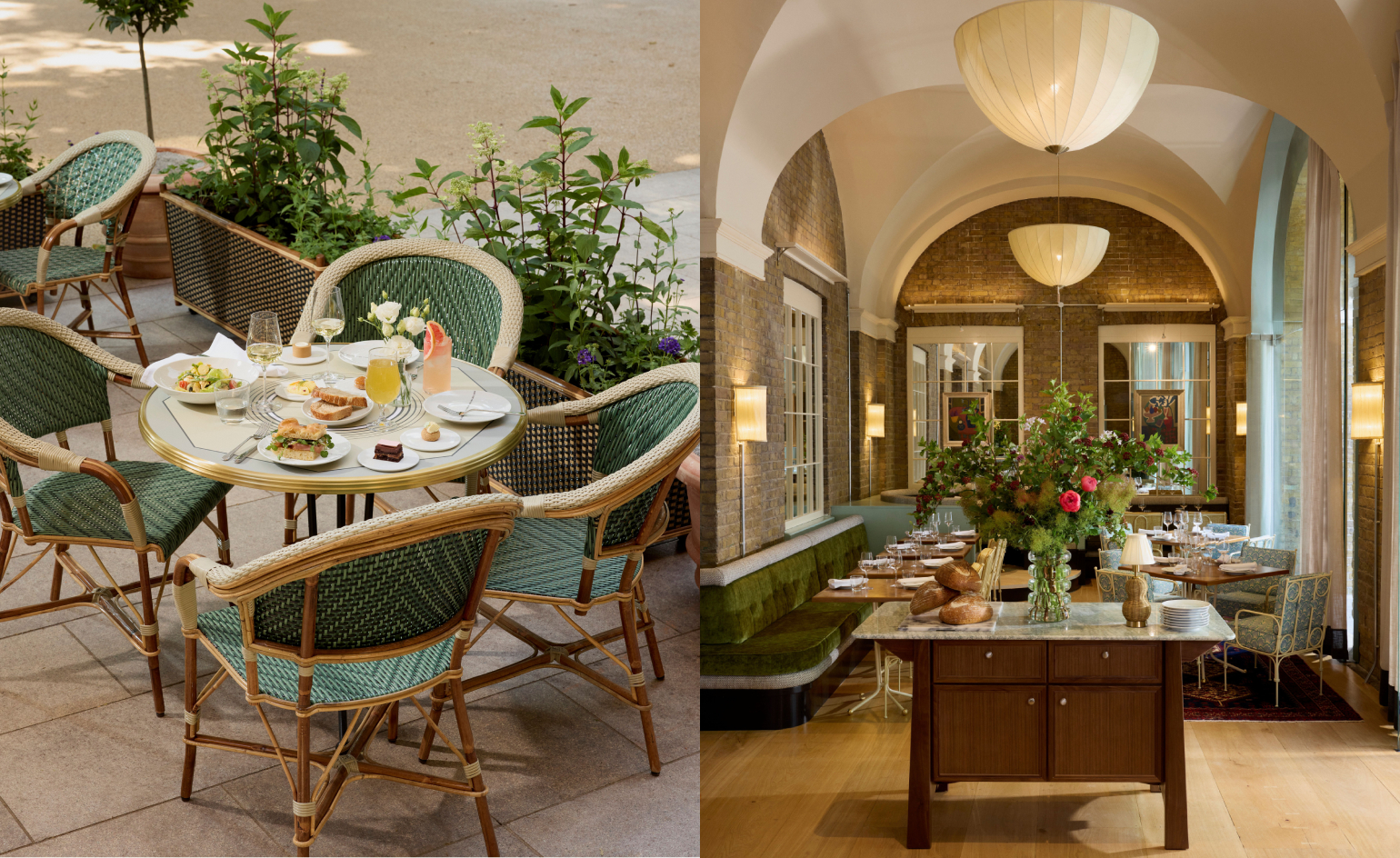 A European-style café opens next to London’s Saatchi Gallery
A European-style café opens next to London’s Saatchi GalleryDesigned by Dion & Arles, Cafe Linea serves fresh pâtisseries, global dishes and sparkling wines in a stunning Grade II-listed setting
-
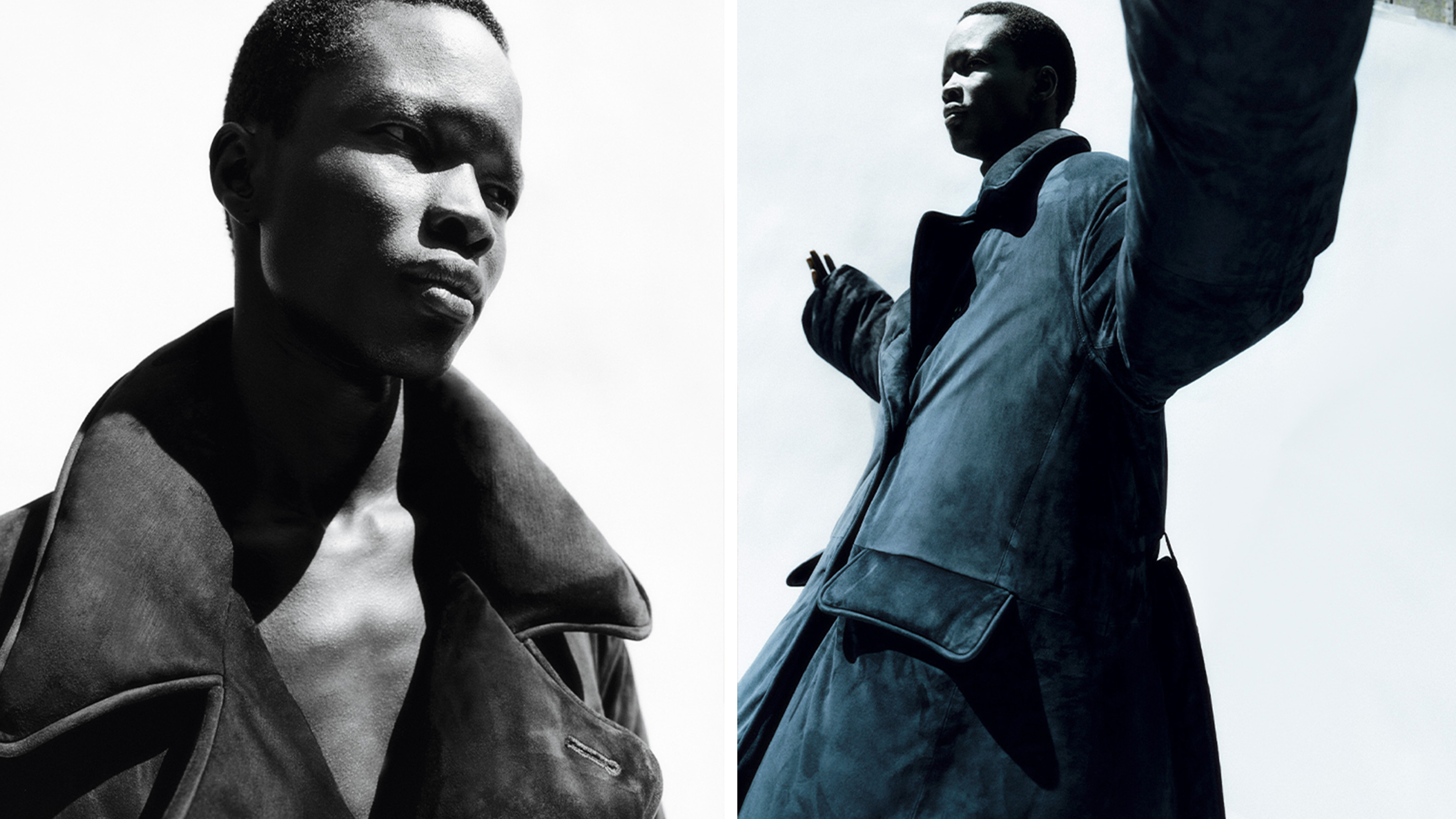 This season, men’s outerwear is defined by bold shapes and seductive textures
This season, men’s outerwear is defined by bold shapes and seductive texturesThe voluminous silhouettes of the season’s finest men’s outerwear, captured in the Wallpaper* September 2023 Style Issue by Umit Savaci and David St John James
-
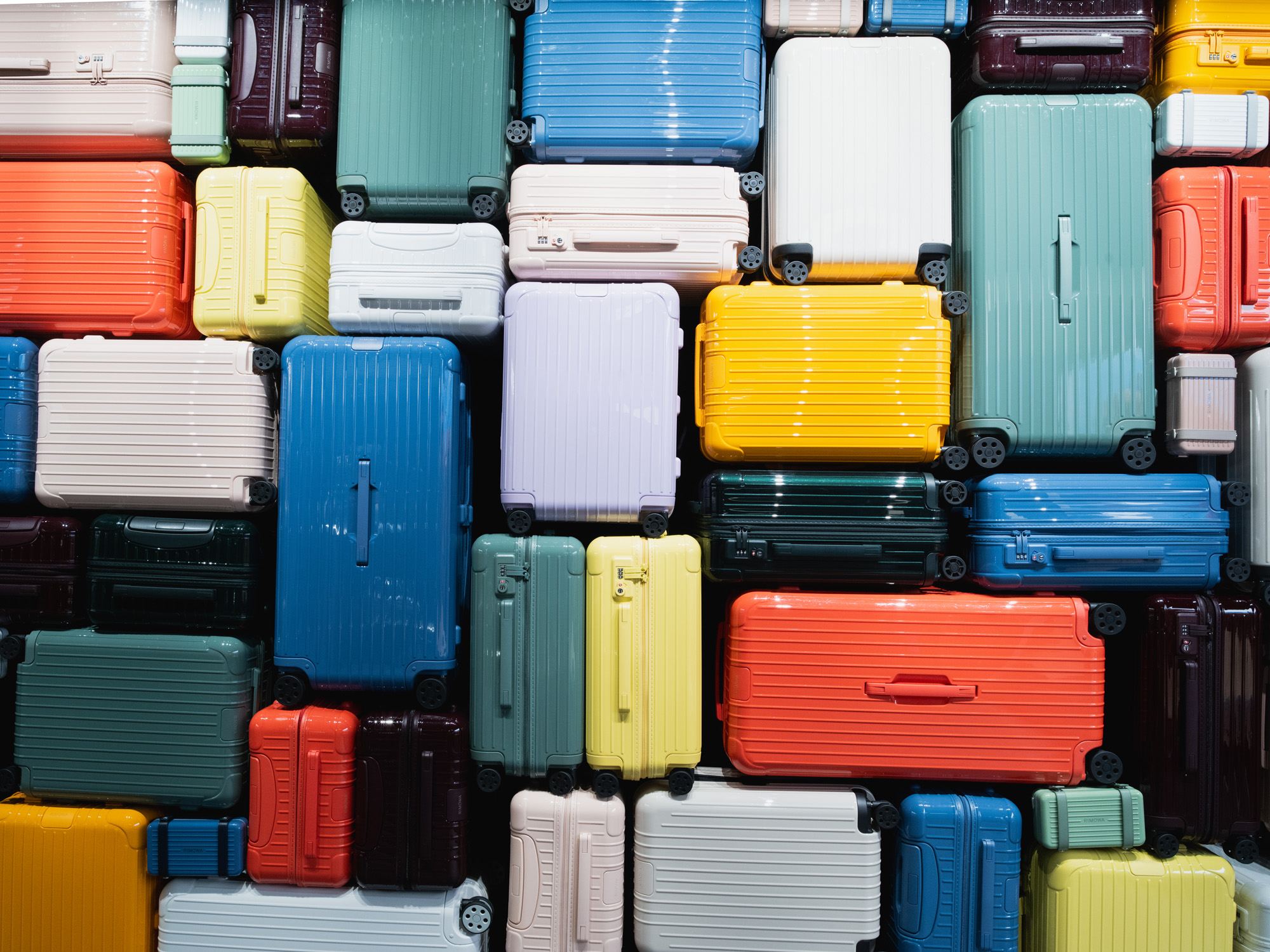 Inside the travelling exhibition celebrating 125 years of luggage brand Rimowa
Inside the travelling exhibition celebrating 125 years of luggage brand RimowaFrom celebrity suitcases to rare special editions, Rimowa’s ‘Seit 1898’ exhibition catalogues over a century of the German luggage brand, making stops in Tokyo, New York, Shanghai and Cologne
-
 Watch this La Jetée-inspired fashion film by Melanie + Ramon, captured on the streets of Paris
Watch this La Jetée-inspired fashion film by Melanie + Ramon, captured on the streets of ParisTaken alongside the Wallpaper* September 2023 cover shoot, this fashion film by Melanie + Ramon draws inspiration from Chris Marker’s experimental 1962 French science-fiction movie La Jetée
-
 American designer Willy Chavarria on his lifelong love of Dickies
American designer Willy Chavarria on his lifelong love of DickiesFeatured in the Wallpaper* USA 300, Willy Chavarria is part of America’s new wave of fashion designers. On the launch of his collaboration with Dickies, he talks utilitarian design, authenticity, and buying his first pair of Dickies at Kmart
-
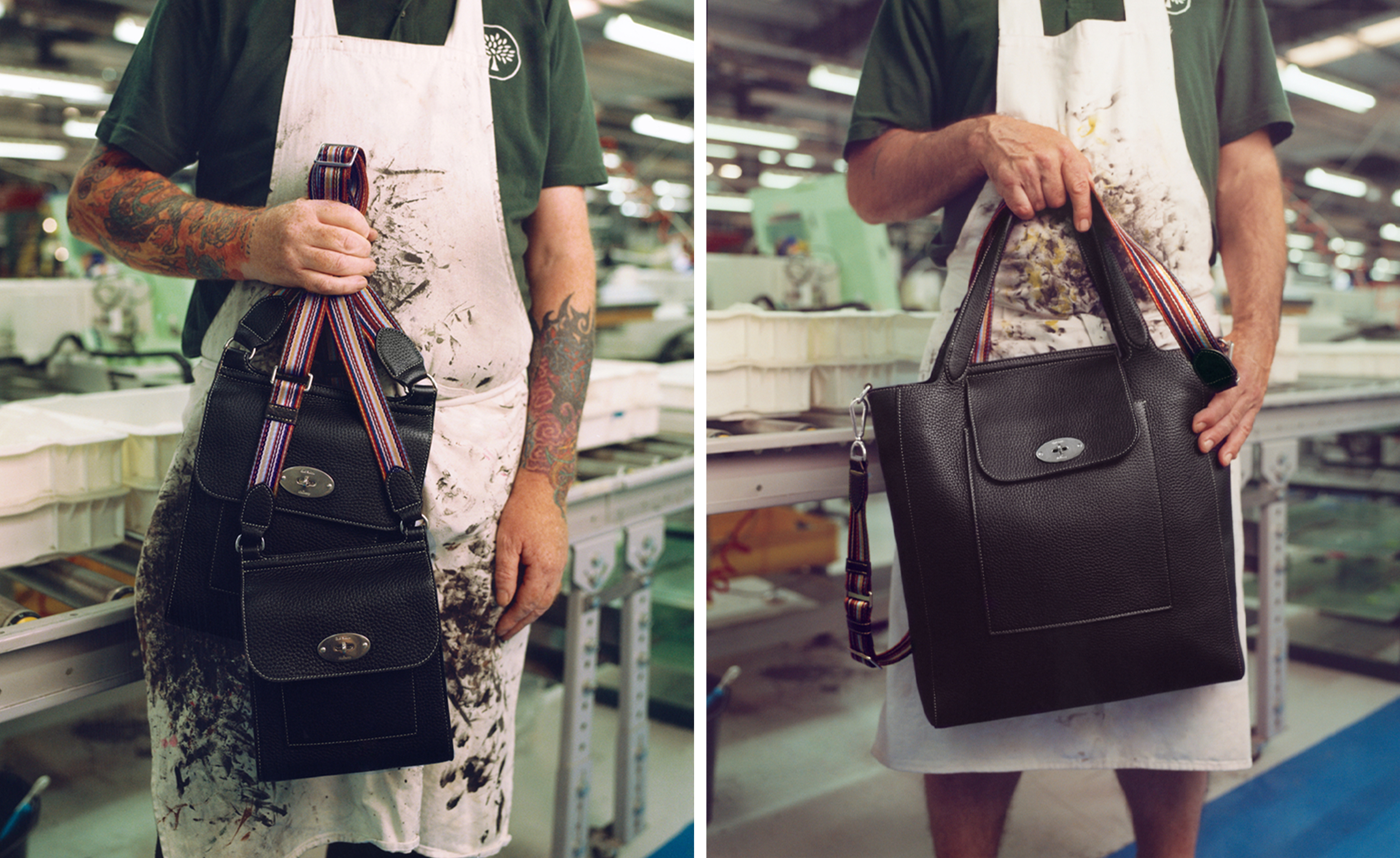 First look at Paul Smith and Mulberry’s colour-soaked bag collaboration
First look at Paul Smith and Mulberry’s colour-soaked bag collaborationBritish stalwarts Paul Smith and Mulberry have united on colourful new bags that riff on the latter’s classic ’Antony‘ messenger style
-
 The evolution of Rabanne
The evolution of RabanneOnce known for its futuristic couture, 1960s-founded fashion house Rabanne is evolving under the creative direction of Julien Dossena, but remains true to its founder’s avant-garde legacy
-
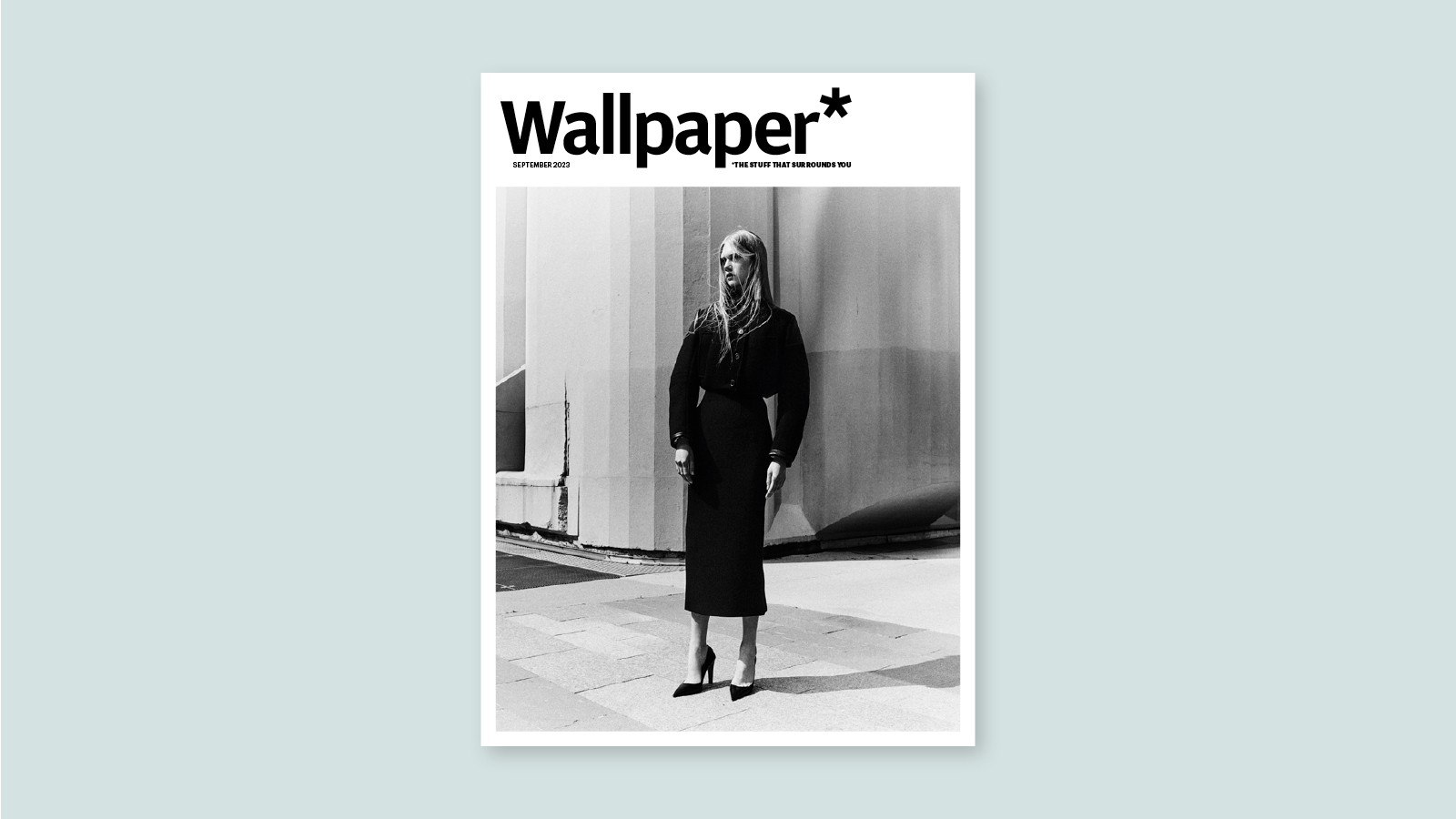 Introducing Wallpaper* September 2023: The Style Issue
Introducing Wallpaper* September 2023: The Style IssueDiscover the looks of the season, Hedi Slimane’s new Celine store in Paris, Silvia Prada’s saucy take on beauty and more in Wallpaper* September 2023, on sale now
-
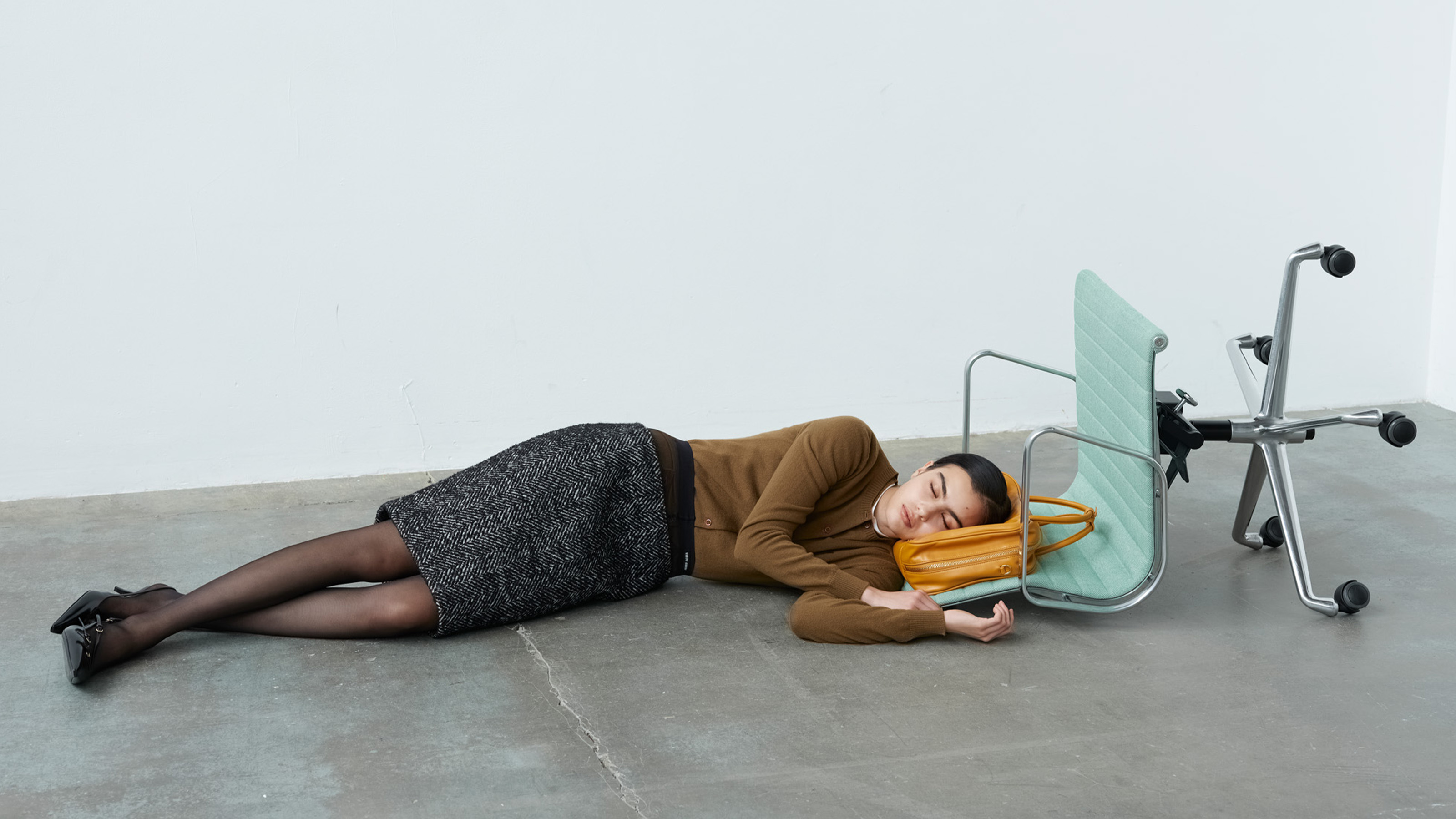 The Glossary: Unpacking A/W 2023’s extra-ordinary looks
The Glossary: Unpacking A/W 2023’s extra-ordinary looksAs seen in the Wallpaper* September 2023 Style Issue, Dal Chodha explores A/W 2023’s defining looks through the writings of Georges Perec, a French author who studied the minute magnificence of everyday life